International Research Collaboration Program
NSJP (NIFS-SWJTU Joint Project)
![]()
Quasi-axisymmetric Stellarator Experiment Program
National Institute for Fusion Science (NIFS) is
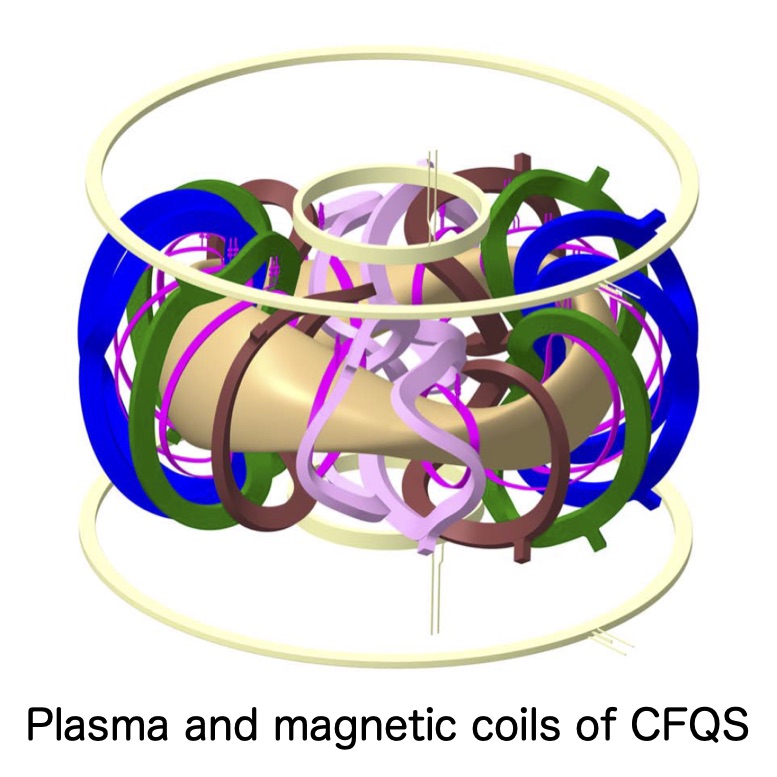 contributing to the world stellarator program with remarkable experimental
results from the Large Helical Device (LHD) covering various physical and
engineering topics in fusion science. In addition to such contributions,
NIFS has started a new stellarator program in 2017 for a small size experiment
with the purpose of exploring a high degree of freedom of three-dimensional
magnetic configuration design, which is a great advantage for stellarators
compared to tokamaks. This program also has an important role in the strategy
of the stellarator community in the world, that is, an initiation of a
new stellarator program in China among many stellarator programs already
started in Japan and western countries. The program NSJP (NIFS-SWJTU Joint
Project) is an international collaboration between NIFS and
Southwest Jiaotong University (SWJTU)
, which is one of the largest Chinese universities located in Chengdu,
Sichuan province and is famous for its special engineering department for
the quality control of Chinese high-speed train system (Shinkansen). A
new quasi-axisymmetric stellarator CFQS (Chinese First Quasi-axisymmetric
Stellarator) will be built in this university. In research on physics and
engineering design of CFQS, wide experiences in physics design studies of the CHS-qa device in NIFS are incorporated.
contributing to the world stellarator program with remarkable experimental
results from the Large Helical Device (LHD) covering various physical and
engineering topics in fusion science. In addition to such contributions,
NIFS has started a new stellarator program in 2017 for a small size experiment
with the purpose of exploring a high degree of freedom of three-dimensional
magnetic configuration design, which is a great advantage for stellarators
compared to tokamaks. This program also has an important role in the strategy
of the stellarator community in the world, that is, an initiation of a
new stellarator program in China among many stellarator programs already
started in Japan and western countries. The program NSJP (NIFS-SWJTU Joint
Project) is an international collaboration between NIFS and
Southwest Jiaotong University (SWJTU)
, which is one of the largest Chinese universities located in Chengdu,
Sichuan province and is famous for its special engineering department for
the quality control of Chinese high-speed train system (Shinkansen). A
new quasi-axisymmetric stellarator CFQS (Chinese First Quasi-axisymmetric
Stellarator) will be built in this university. In research on physics and
engineering design of CFQS, wide experiences in physics design studies of the CHS-qa device in NIFS are incorporated.
A quasi-axisymmetric stellarator is a type of toroidal magnetic confinement devices with
the plasma confinement properties similar to tokamak device. This concept does not require
a plasma current and thus eliminates problems in tokamaks; disruptions, and technological
difficulties of current drive. This research topic is very important recently for both
stellarator and tokamak research communities.
1) Magnetic configuration
The magnetic configuration of CFQS plasma was designed as a low aspect ratio stellarator with the quasi-axisymmetric property. Basic configuration parameters are: Toroidal period number N = 2, Plasma major radius R = 1 m, Plasma aspect ratio Ap = 4.0. Poloidal cross sections of the vacuum magnetic surfaces are shown for three toroidal positions of the torus.
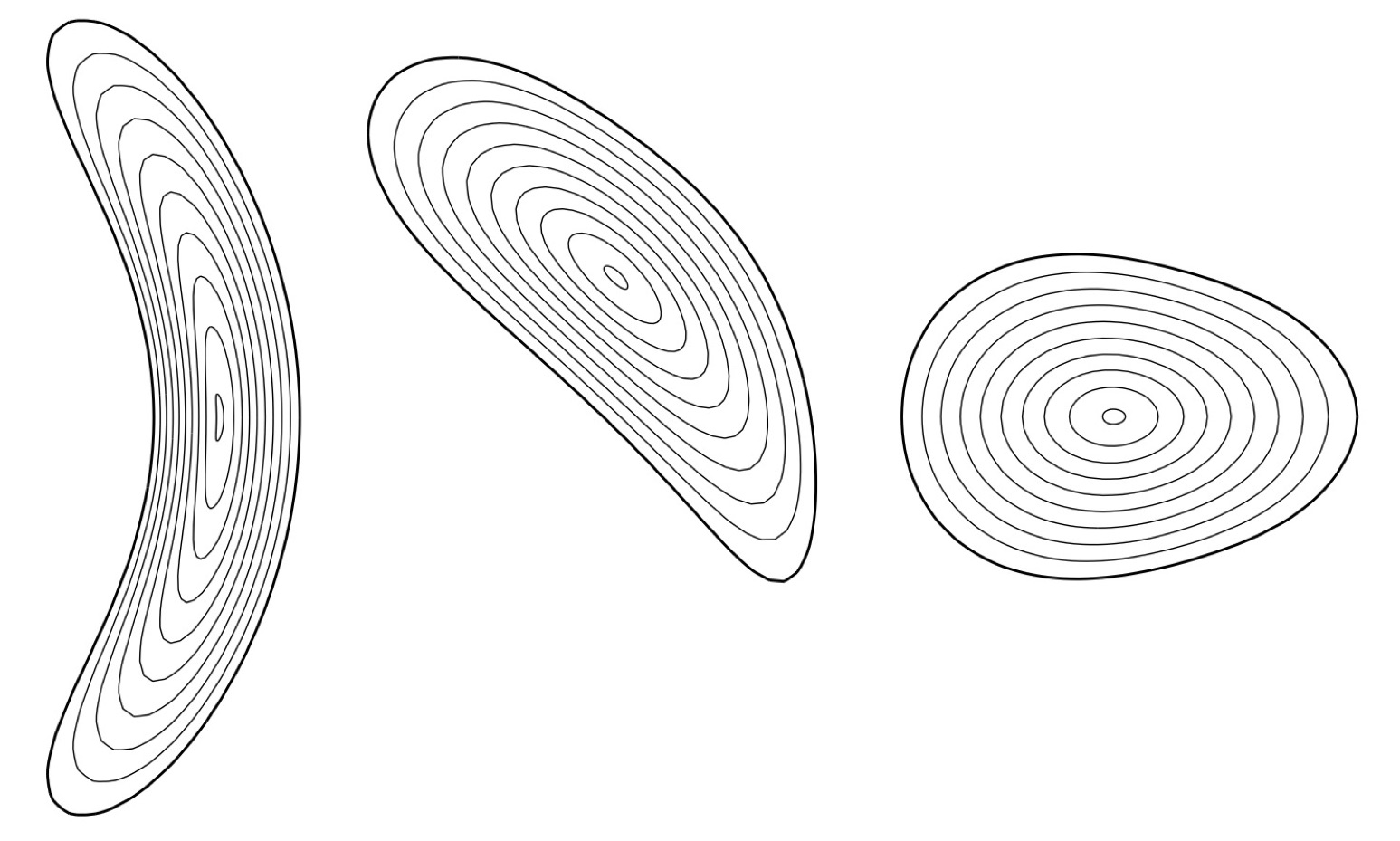
The rotational transform profile for vacuum field is almost flat with values below 0.4. The Boozer spectra of the magnetic field ripples consist of one dominant component of the toroidicity (m=1, n=0) and other small residual components.
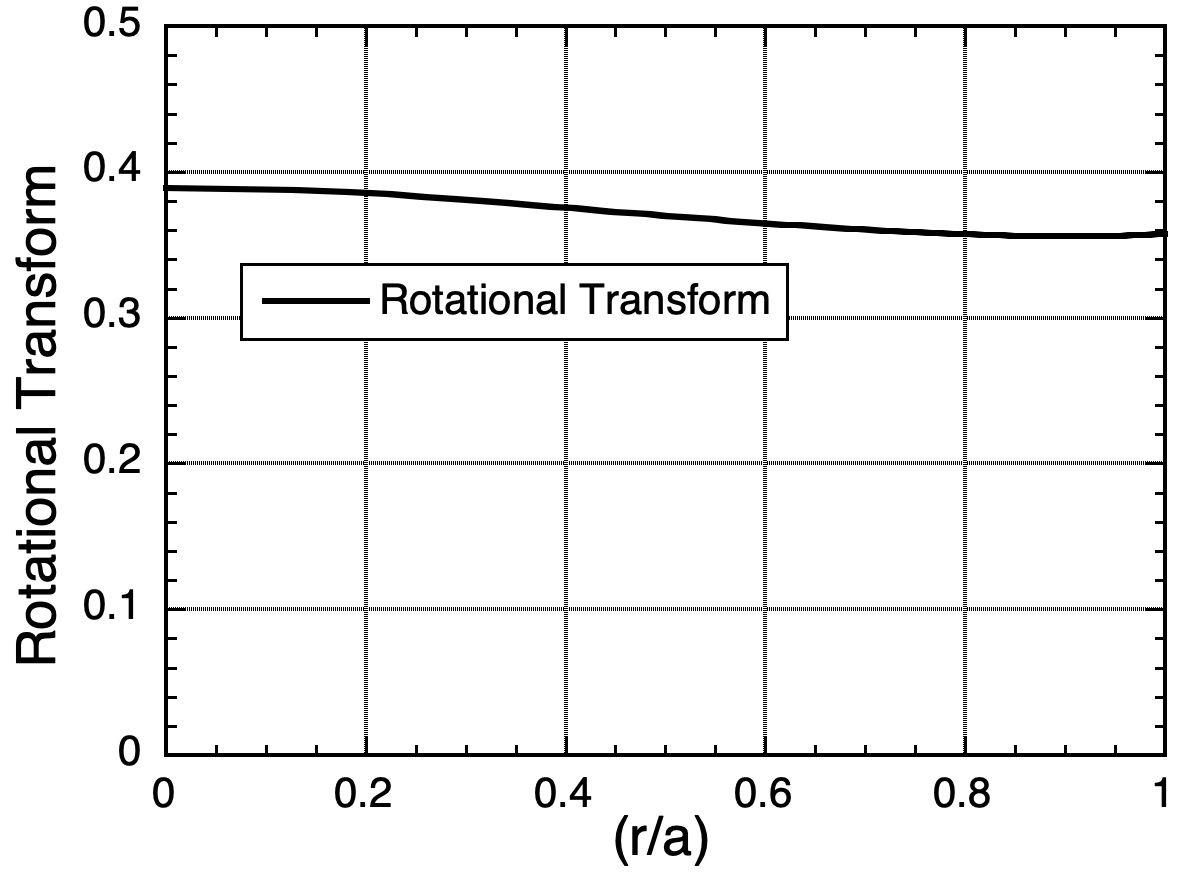
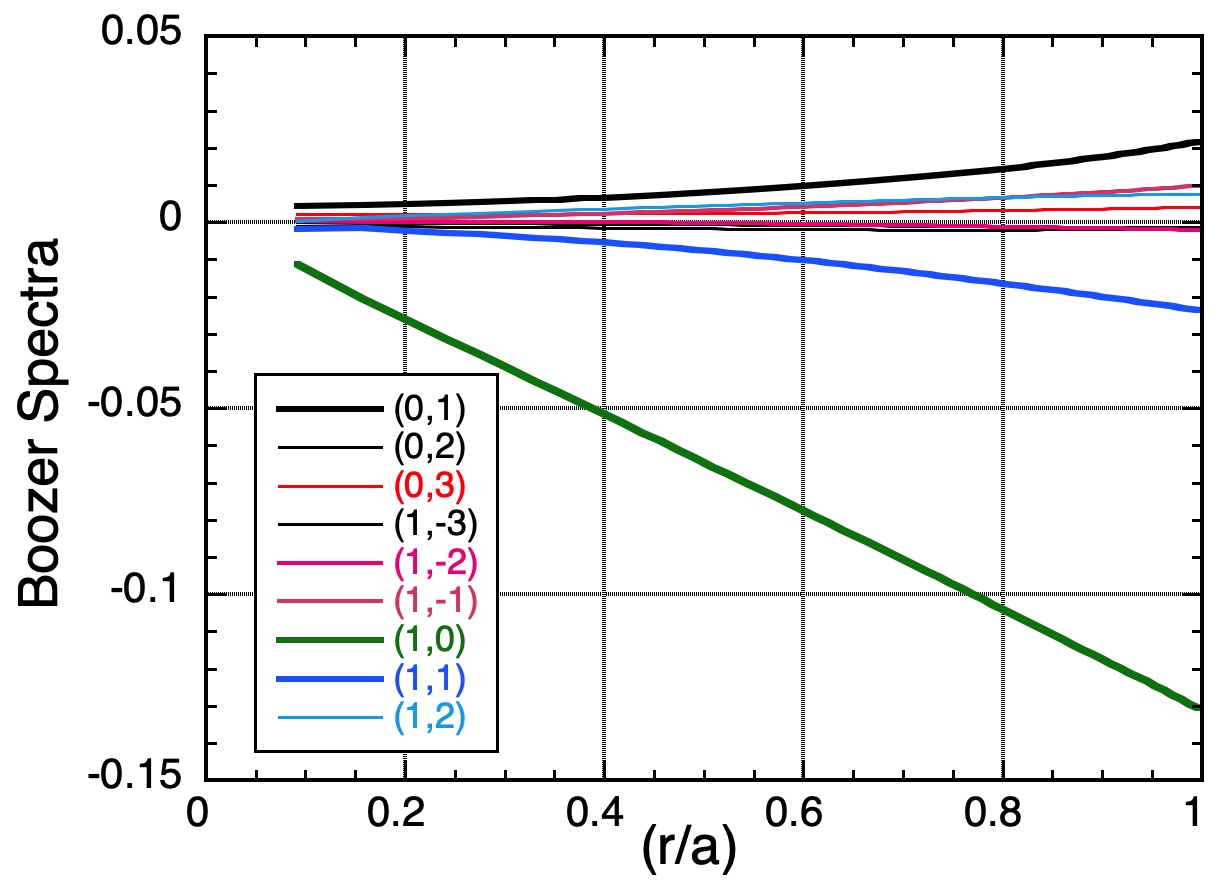
The magnetic surface calculation plots using the modular coils designed for the target boundary shapes are shown. The red lines show the target shape and the blue lines show the shape of vacuum chamber wall.
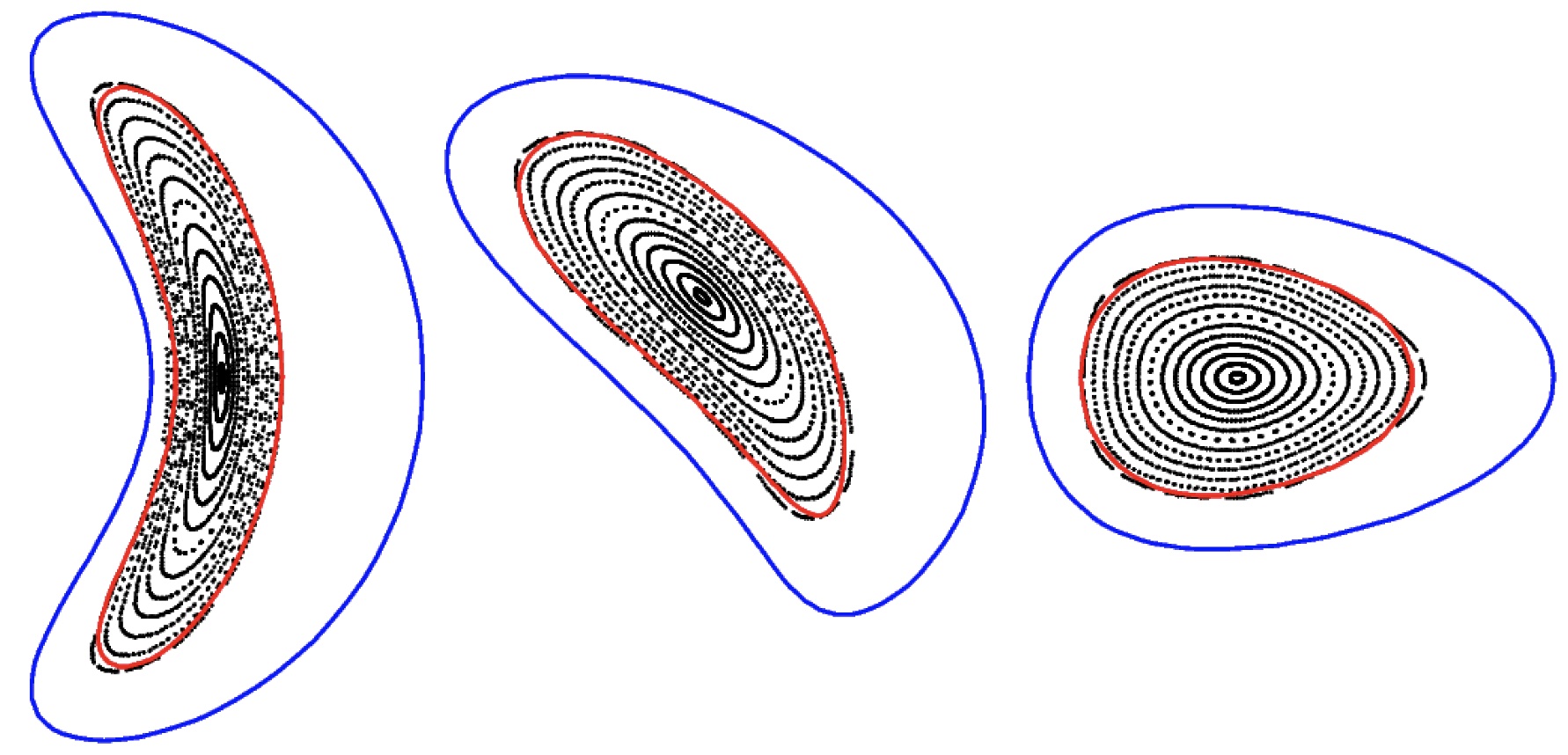
When the toroidal field is reduced by activating auxiliary toroidal coils, an island bundle diverter configuration is formed.

2) CFQS Device
A quasi-axisymmetric stellarator configuration is produced with 16 modular coils (312.5 kA current in each coil) for nominal toroidal field strength B = 1 Teslt(T). In addition, auxiliary toroidal coils for controlling toroidal field strength (and controlling rotational transform profile) and poloidal coils for controlling the plasma shape and position are equipped.
Detailed information is described in the
technical memo.
The experiment will be operated in two phases. The first phase will be in a week magnetic filed of 0.1 T prepared in Jiuli campus and the second phase will be in a full mode operation of 1 T. For the first and second phases, all magnetic coils are manufactured for 1 T operation. However for the first phase, the power supply is designed and manufactured for 0.1 T operation. The power supply and the cooling system for 0.1 T experiment are shown below. (CFQS-T experiment)
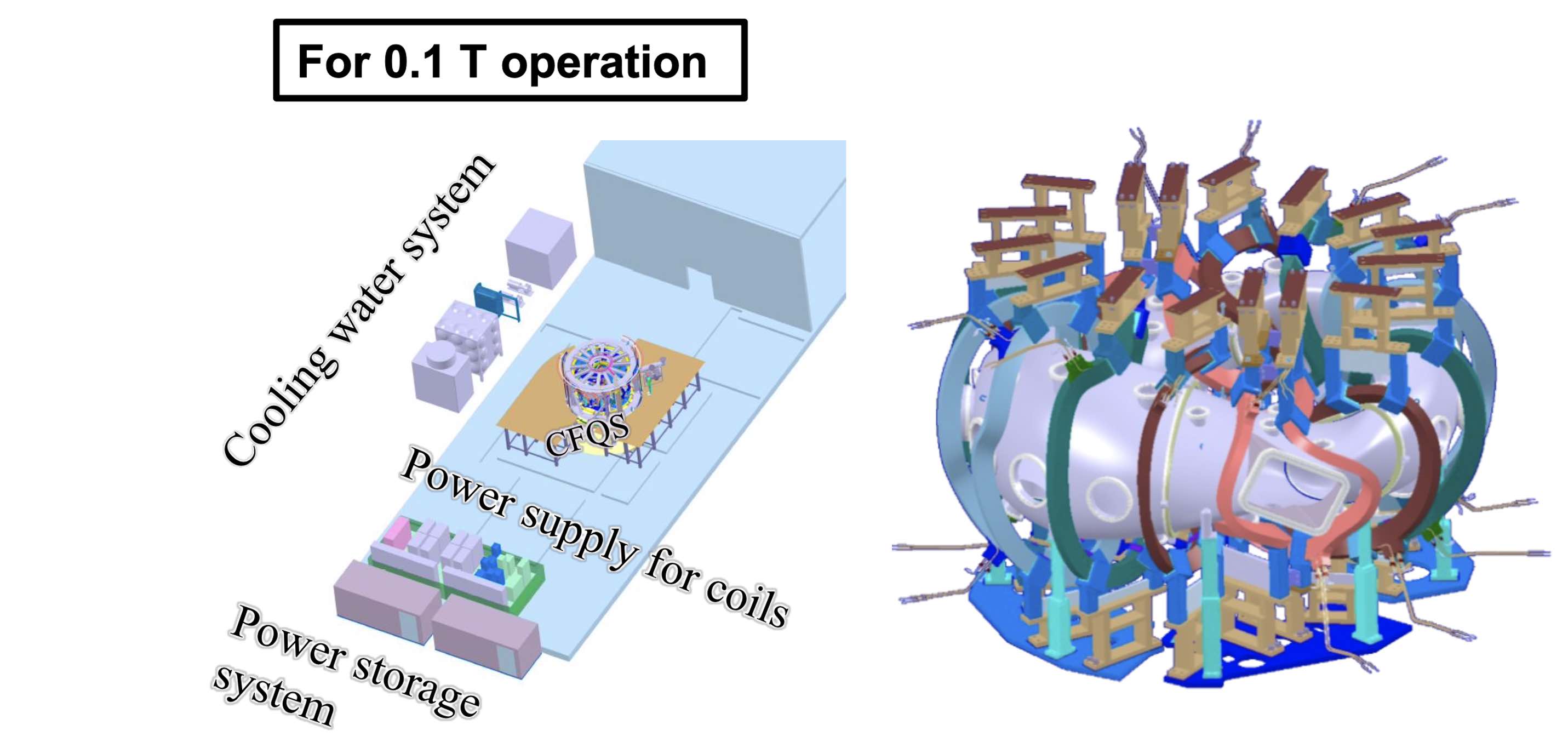
The second phase of the experiment will be prepared in the Tianfu new university site. The power supplies and heading devices will be strongly reinforced for larger magnetic field operation of CFQS device. (CFQS experiment)
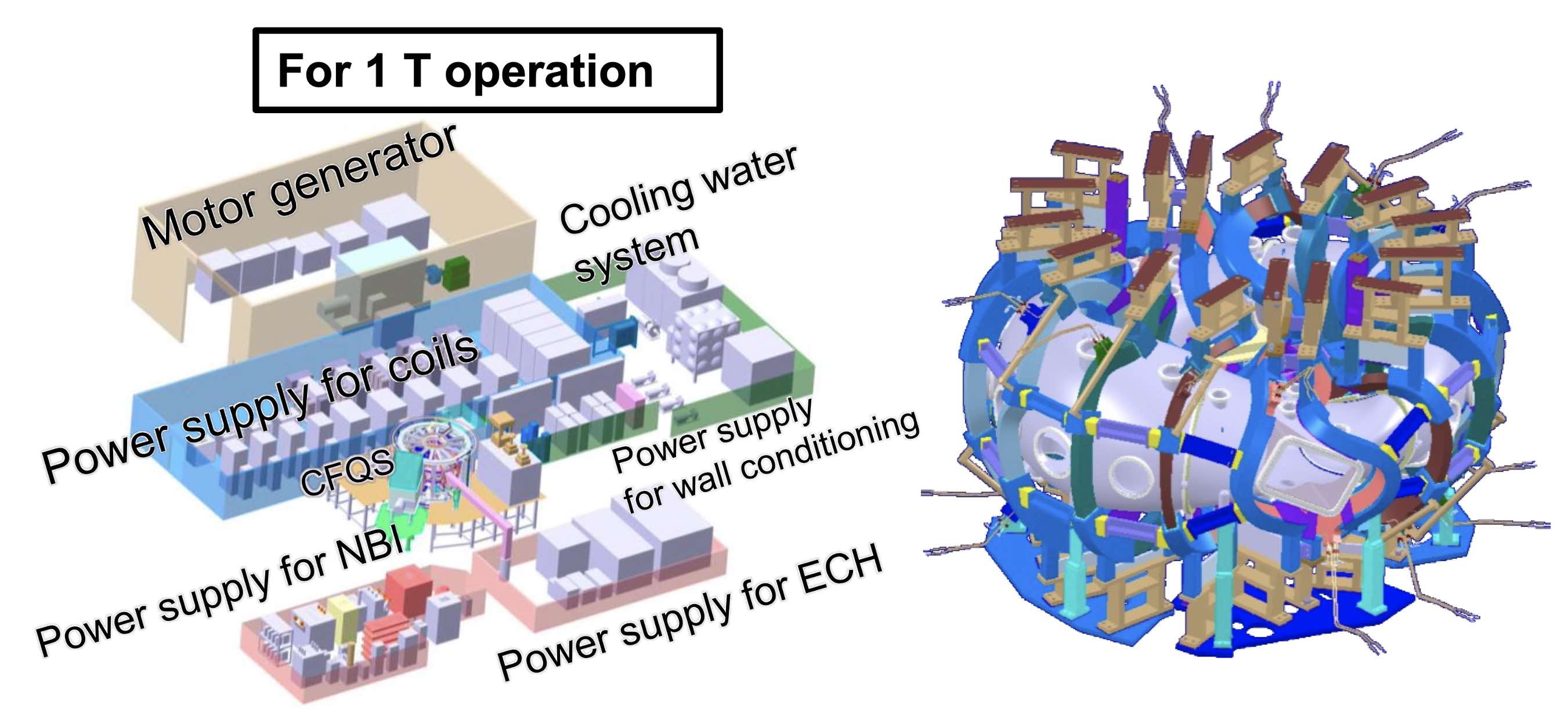
In October 2024, the experiments of CFQS-T started with 0.1 T magnetic field in Jiuli university campus. The measurements of magnetic surfaces were successful and the ECH experiments with 2.45 GHz magnetron started.
3) Manufacturing
The components of the device are manufactured in the high-tech company, Hefei Keye Electro Physical Equipment Manufacturing Co., Ltd. All stuff in the company have highly challenging spirits attacking very difficult works of manufacturing modular coils. Photos for the manufacturing of modular coils and the design of vacuum chamber are shown. Finally the device construction was completed for the 0.1 T experiments of CFQS-T.
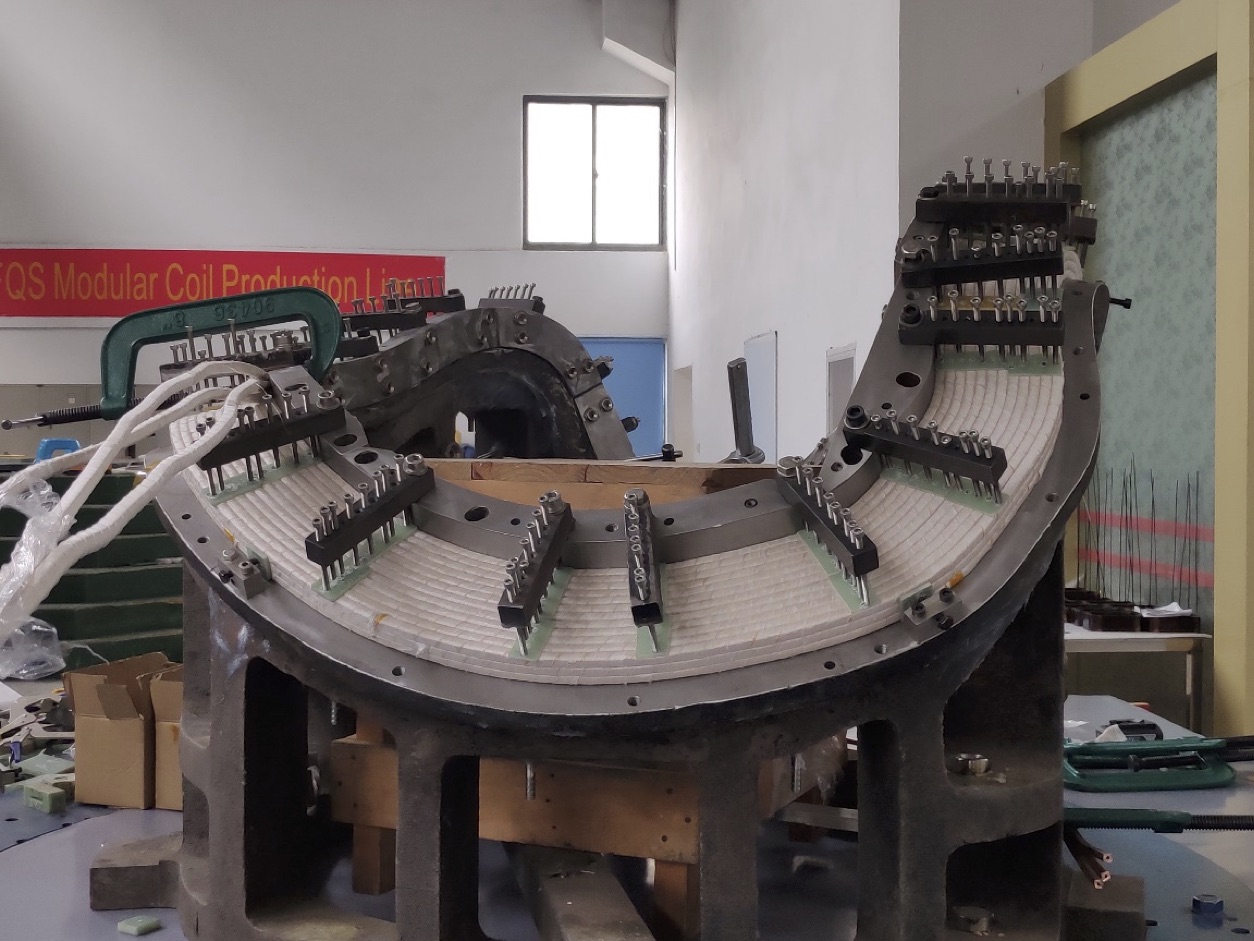
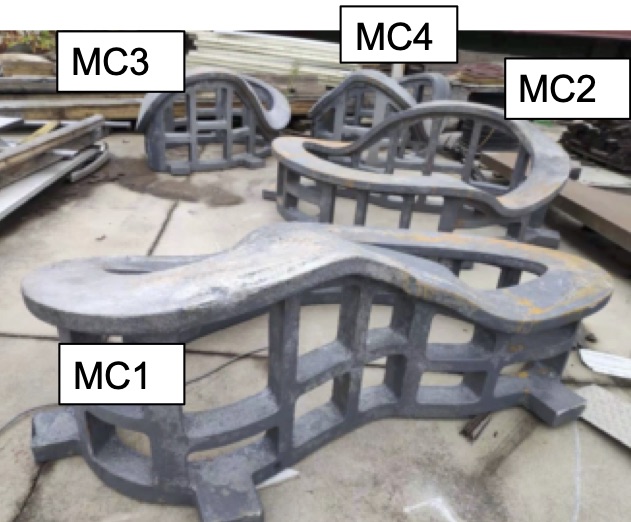

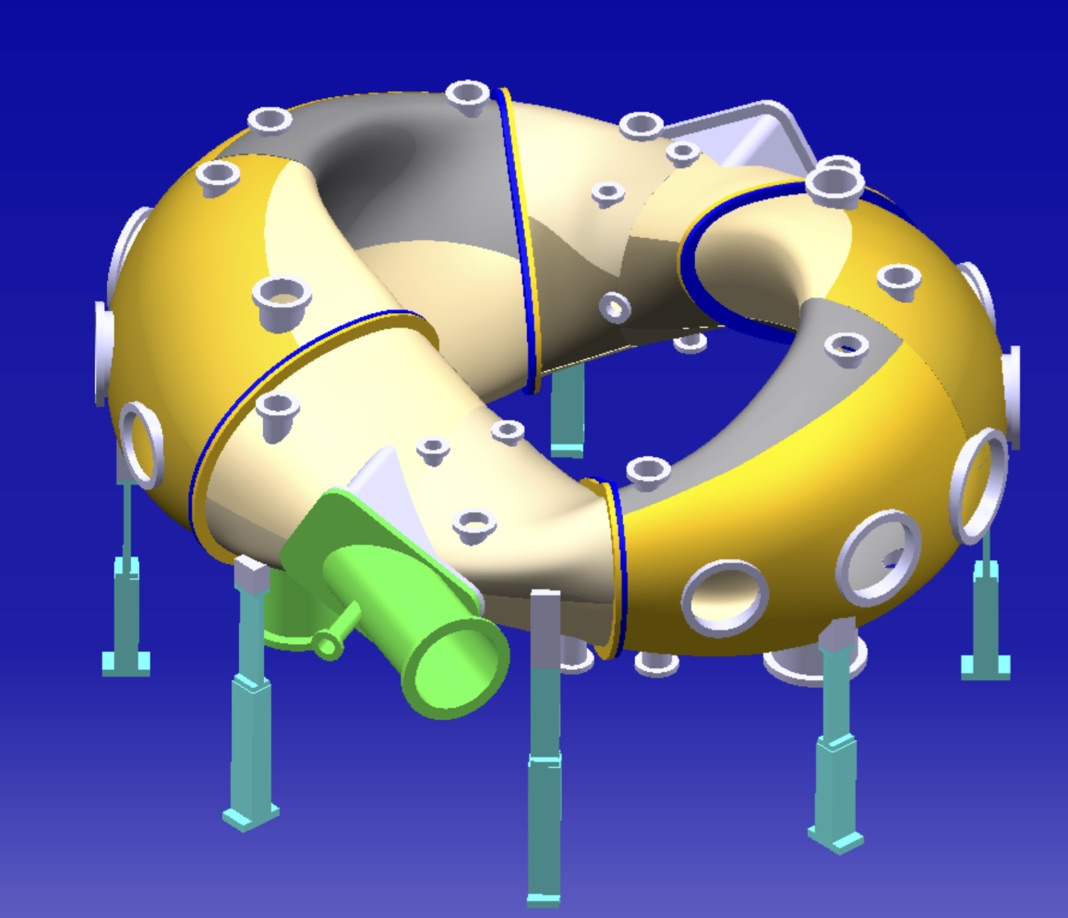
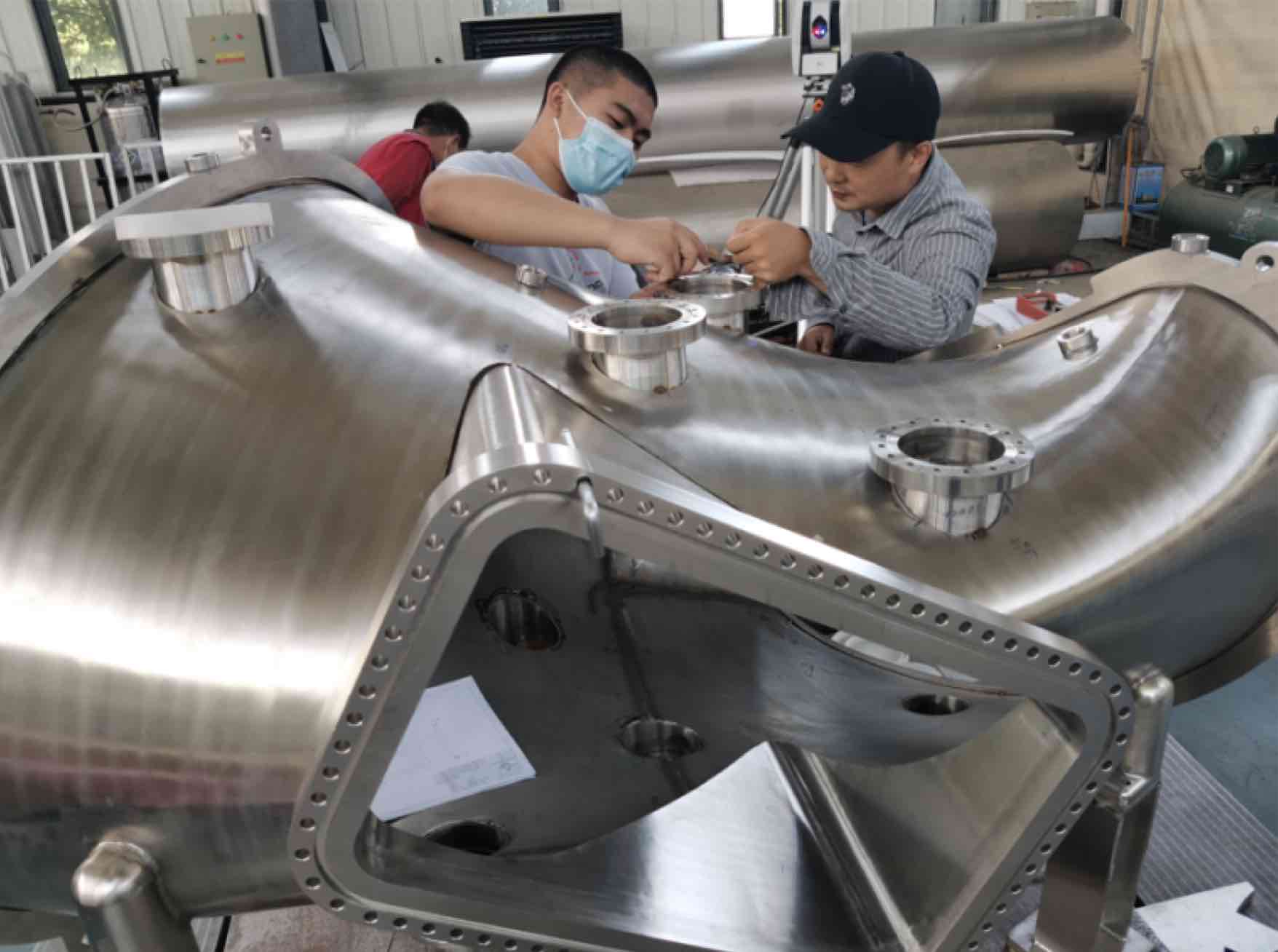
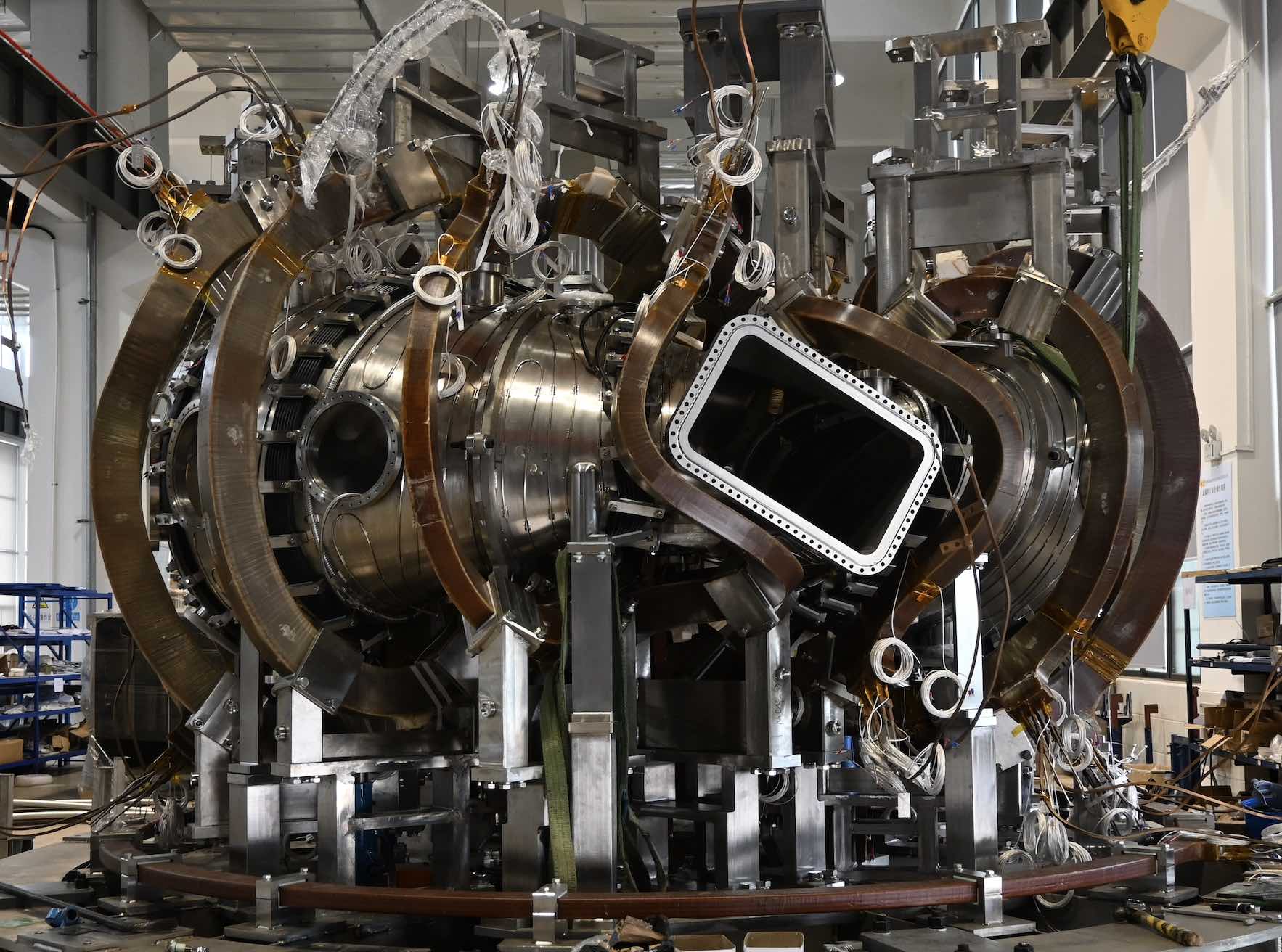
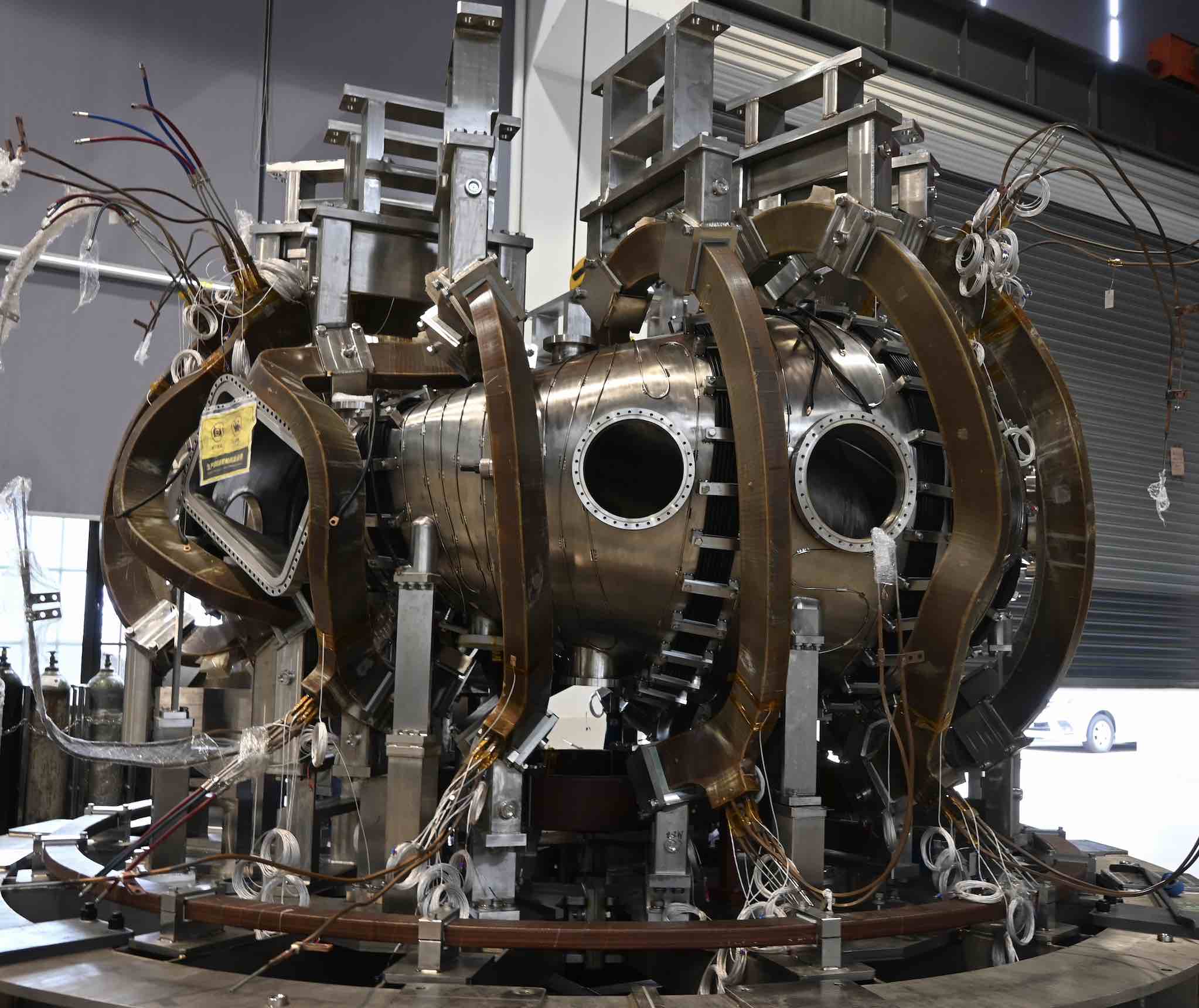
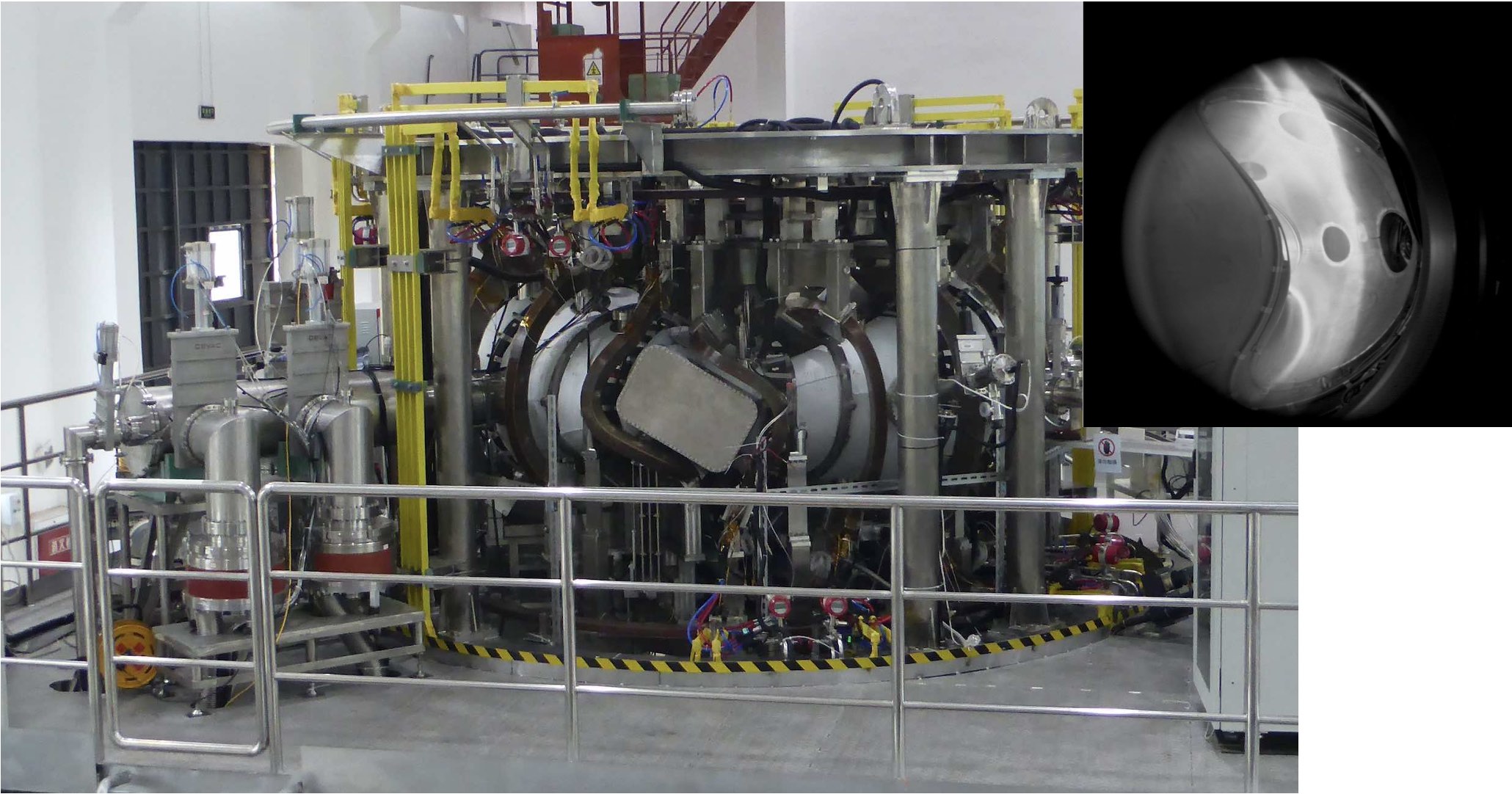
4) First phase experiment with 0.1 Tesla magnetic field
Plasmas with the quasi-axisymmetric magnetic configuration were produced. The CCD camera image shows a plasma produced with 2.45 GHz microwave.

5) Progress of the NSJP (NIFS and SWJTU Joint Project)
| 2015.5 | SWJTU (Southwestern Jiaotong University) inquired NIFS for the transfer of CHS. |
| 2015.12 | Leaders of Chinese fusion community were invited to SWJTU and supported NSJP. |
| 2016.7 | A plan of constructing a new quasi-axisymmetric stellarator was selected. |
| 2017.7 | An MoU was concluded between NIFS and SWJTU for starting NSJP program. |
| 2017.10 | NSJP team visited PPPL and HSX lab. for discussing technical issues for manufacturing a device. |
| 2018.5 | Engineering design for CFQS was started. |
| 2018.5 | The 1st steering committee for NSJP was held in Chengdu. |
| 2018.5 | CFQS techinical report V.1 |
| 2018.11 | NSJP team visited Greifswald for discussing technical issues for manufacturing a device. |
| 2019.3 | Manufacturing of a mockup coil started. |
| 2019.11 | CFQS techinical report V.2 was published. |
| 2020.1 | Manufacturing of a mockup coil was completed. |
| 2020.9 | Manufacturing of the first modular coil (MC4) started. |
| 2020.10 | Manufacturing of the vacuum chamber started. |
| 2020.11 | CFQS techinical report V.3 was published. |
| 2021.2 | Metal block molds for shaping vacuum chamber wall |
| 2021.3 | Manufacturing of the first modular coil (MC4-1) was completed. |
| 2021.3 | Plasma discharge in SSHD at NIFS |
| 2021.7 | Conductor windings of modular coil MC4-3 |
| 2021.9 | Renovation of the CFQS experimental hall was completed. |
| 2021.11 | The 4th steering committee for NSJP was held in remote. |
| 2021.11 | CFQS techinical report V.4 |
| 2021.12 | Plasma discharge in SSHD at SWJTU |
| 2022.3 | Second VPI is completed for MC4-1 |
| 2022.6 | A part of stainless steel vacuum chamber |
| 2022.7 | Experimental hall is ready for setting the CFQS device |
| 2022.7 | 14 coils are formed out of 16 total modular coils |
| 2022.9 | Supporting design of 4 types of modular coils |
| 2022.10 | Leak test of vacuum chamber with ribbon heater |
| 2022.12 | The 5th steering committee for NSJP was held in remote. |
| 2023.3 | CFQS techinical report V.5.1 |
| 2023.6 | Manufacturing of 16 modular coils are completed |
| 2023.7 | Face to face meeting after Corona pandemic |
| 2023.7 | Assembling process for 0.1 Testa operation |
| 2023.12 | The 6th steering committee for NSJP was held in Hefei and Chengdu |
| 2024.1 | Components of CFQS experiment are prepared in the test chamber |
| 2024.3 | Baseplate for CFQS device |
| 2024.4 | CFQS device is in assembling phase |
| 2024.5 | A quarter of vacuum chamber |
| 2024.5 | TFC (Toroidal Field Coil) coils |
| 2024.5 | Assembling CFQS half period |
| 2024.6 | Assembling CFQS full torus |
| 2024.7 | Assembling CFQS complete device in Keye company |
| 2024.7 | CFQS device in Jiuli experimental hall (CFQS-T experiment) |
| 2024.7 | CFQS with NIFS team |
| 2024.11 | CFQS-T experiment starting ceremony |
| 2025.5 | Carry out CFQS for 1 Tesla modification |
| 2025.5 | Starting construction for a new site in Tianfu |
6) CFQS experimental sites
The experimental site for the first phase (0.1 T) will be in SWJTU Jiuli campus at Chengdu city center. The second experimental site for the full operation (1 T) will be in Tianfu at the new academic site of the Chengdu city.
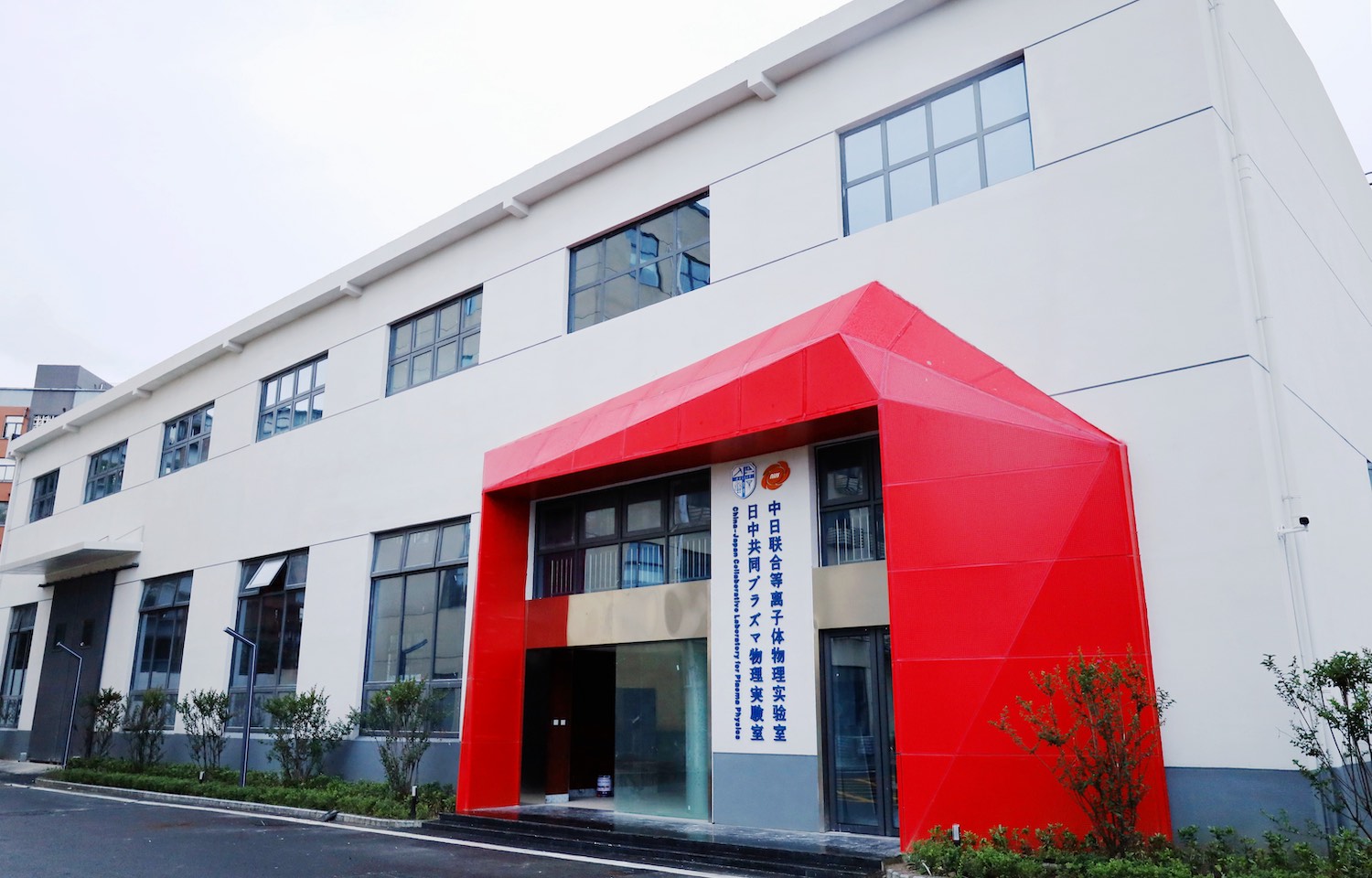
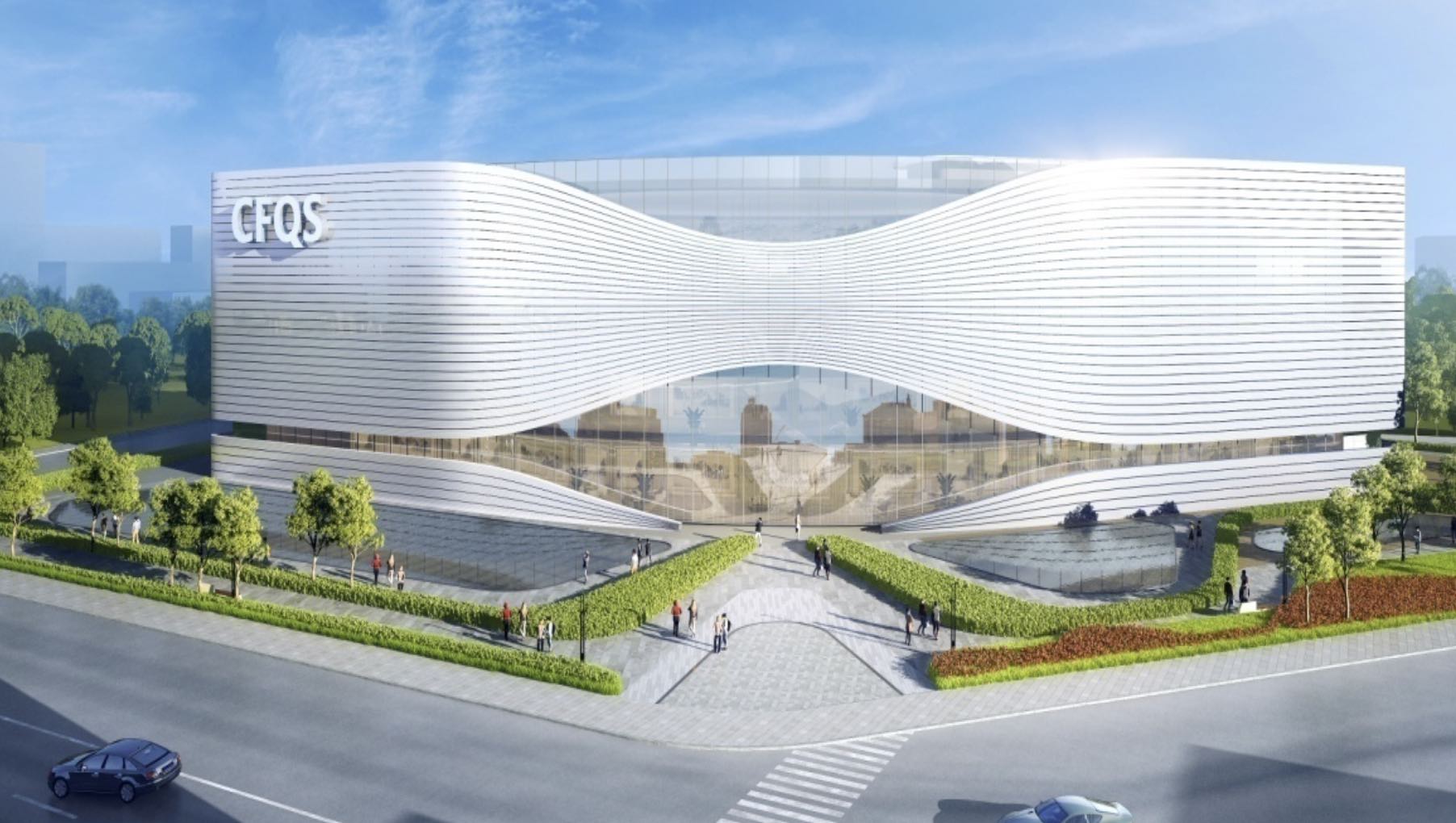
| CFQS experimental site in Juili (CFQS-T) First phase experiments for 0.1 Tesla was finished in 2025 May | CFQS expeimental site in Tianfu |
7) NSJP design team for CFQS
An international design team for CFQS was organized with researchers from NIFS and SWJTU(Southwest Jiaotong University) and experienced engineers from Keye company in Hefei. A steering committee was also organized by NIFS and SWJTU in order to make important decisions in the NSJP program.
| NSJP Steering Committee for CFQS | |||
| National Institute for Fusion Science | Southwest Jiaotong Univertisy | ||
| Zensho Yoshida | Director general | Chuan He | Vice president (SWJTU) |
| Mitsutaka Isobe | Professor | Yuhong Xu | Professor (SWJTU) |
| Akihiro Shimizu | Assistant professor | Changjian Tang | Professor (Sichuan univ.) |
| Shoichi Okamura | Professor emeritus | Dapeng Yin | Chief engineer (Keye co.) |
Members of steering committee and CFQS design team (2019.5)

Members of steering committee and CFQS design team (2023.12)
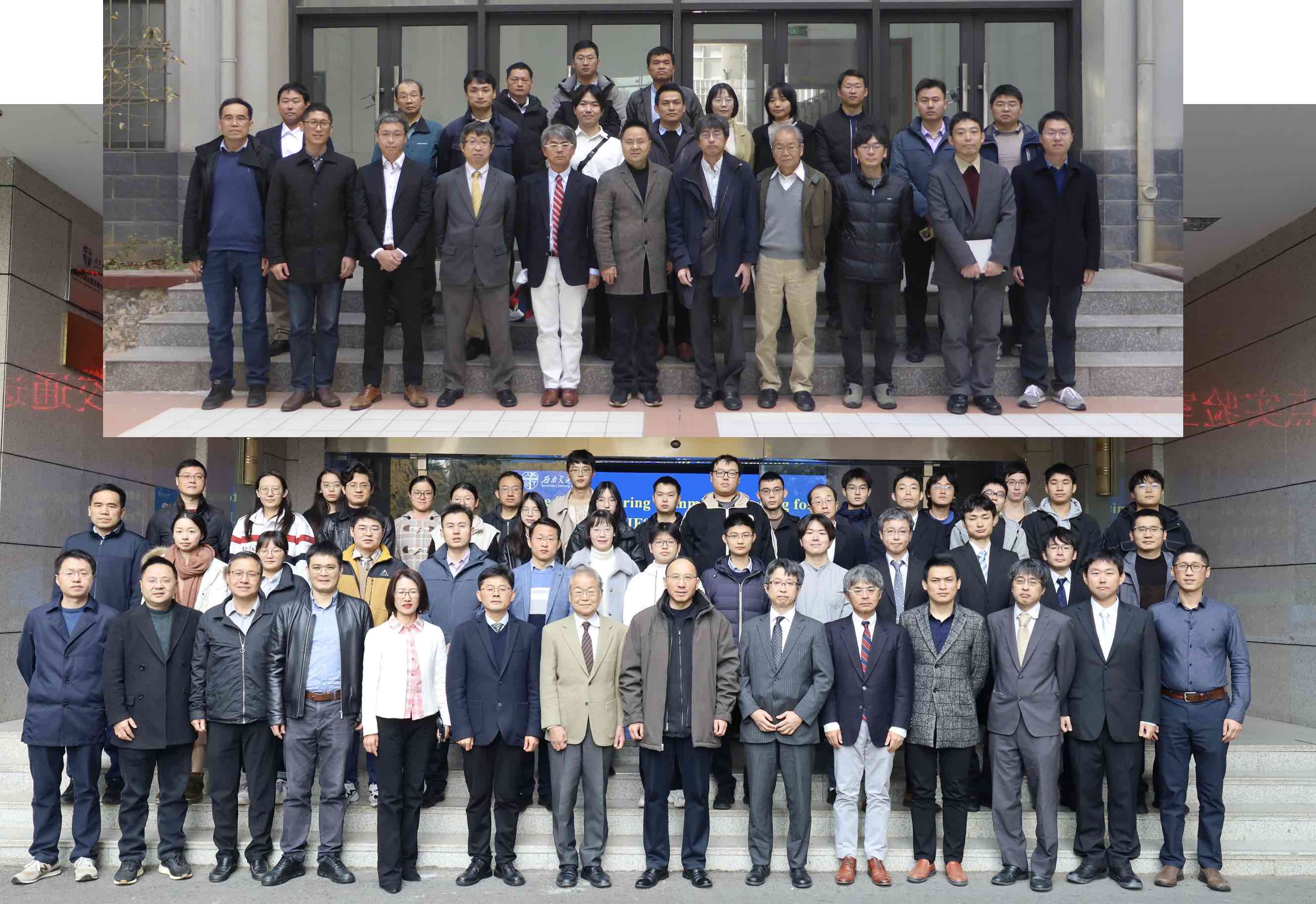
NSJP team group photos
8) Publication List